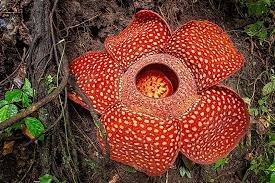
The word ‘parasitos’ was used by the Ancient Greeks to describe a person who ate at your dining table but never invited you back. Certain plants and animals, and unfortunately, a few people as well, act as parasites. These uninvited guests depend on others for shelter, support, food, and water and in return, give nothing but harm to the host!
Rafflesia arnoldii, the world’s heaviest and largest known flower, is the most popular among parasitic plant varieties.
They are parasitic to the roots of the liana vines, supplementing their own growth by sapping nutrients from the host! This rainforest bloom is found in Sumatra of Indonesia, and flowers only once every nine to twenty-one months. After staying in bloom for about five days, the large petals fall and decay into a slimy mess and the remaining parts are no longer visible.
Controversially, Rafflesia arnoldii is named after the British Statesman, Sir Thomas Stamford Raffles, who was actually not the first person to discover this wild plant. In fact, it was the French botanist Louis Auguste Deschamps who, in 1797, first realised the existence of the flower. However, documented proof of his sparkling discovery and scientific research saw daylight only 250 years later in the Natural History Museum in London!
Picture Credit : Google




